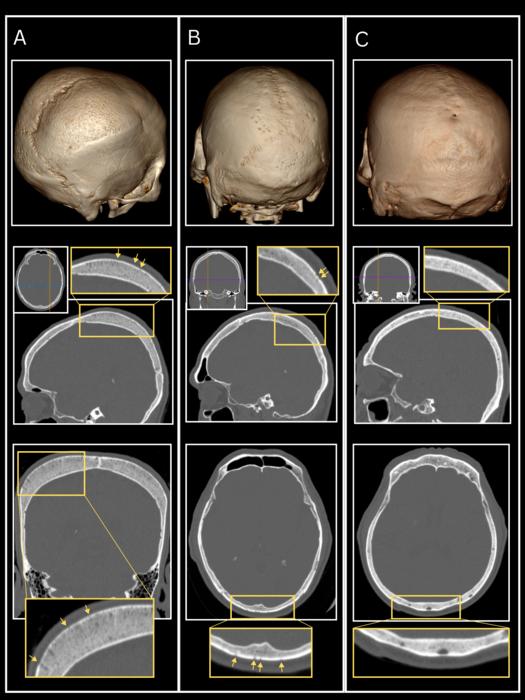Skull lesions in ancient forager-farmers likely indicate compromised immune systems, not infant-onset anemia
Porous cranial lesions in the skeletal remains of ancient forager-farmer communities are often hailed as markers for serious diseases such as infant-onset anemia. Now, a study involving 375 adults from the contemporary Indigenous Tsimane people of Bolivia contradicts this interpretation. Instead, the findings suggest that these lesions correlate with compromised immune system activity. Bioarchaeologists theorize that porous lesions (specifically, cribra cranii and cribra orbitalia), formed early in life and found on the skulls of forager-farmer adults, reflect health issues such as severe infant-onset anemia from parasite infections. Now, Amy Anderson and colleagues find that the lesions in adults are not reliable evidence of this disorder. Rather, the marks – especially cribra orbitalia, affecting the eye sockets – correlate with compromised immune system activity. Anderson et al. conducted tomography scans for 375 Indigenous Tsimane adults aged 39 to 87 participating in the Tsimane Health and Life History Project. The Tsimane live in the Bolivian Amazon and are forager-farmers with high mortality rates and food scarcity. Their lifestyle resembles that of many ancient subsistence communities. Sixty-four scans contained lesions; of these, 46 showed cribra cranii and 23 showed cribra orbitalia. The team then compared lesion incidence with two decades of respiratory infection diagnostic data and more than a decade of hemoglobin measurements from participants. People with cribra orbitalia tended to have fewer B cells, fewer helper T cells, and lower ratios of helper to killer T cells. Bayesian modeling found that cribra orbitalia corresponded with a higher risk of tuberculosis and higher rates of mortality. Neither type of lesion correlated with hemoglobin values, which are used to detect and monitor anemia.

and hair-on-
end
appearance of cranial diploe. (B) Ectocranial porosity on the posterior parietal bones and occipital squama. (C) Absence of CC . Arrows indicate
individual foramina. Credits: Anderson et al., Sci. Adv. 11, eadw3697
Bibliographic information:
Amy Anderson, Gregory Thomas, Randall Thompson, Andrei Irimia, Jonathan Stieglitz, Suhail Ghafoor, Kenneth Buetow, Benjamin Trumble, Chris Rowan, Michael Miyamoto, Paul Hooper, L Wann, Adel Allam, Thomas Kraft, Bret Beheim, Dan Cummings, Hillard Kaplan, Michael Gurven, M. Linda Sutherland, James Sutherland, Margaret Gatz, Wendy Mack, Caleb Finch, Daniel Eid Rodriguez, Aaron Blackwell, “Childhood skeletal lesions common in prehistory are present in living forager-farmers and predict adult markers of immune function”, Science Advances, DOI: 10.1126/sciadv.adw3697
Press release from the American Association for the Advancement of Science – AAAS


